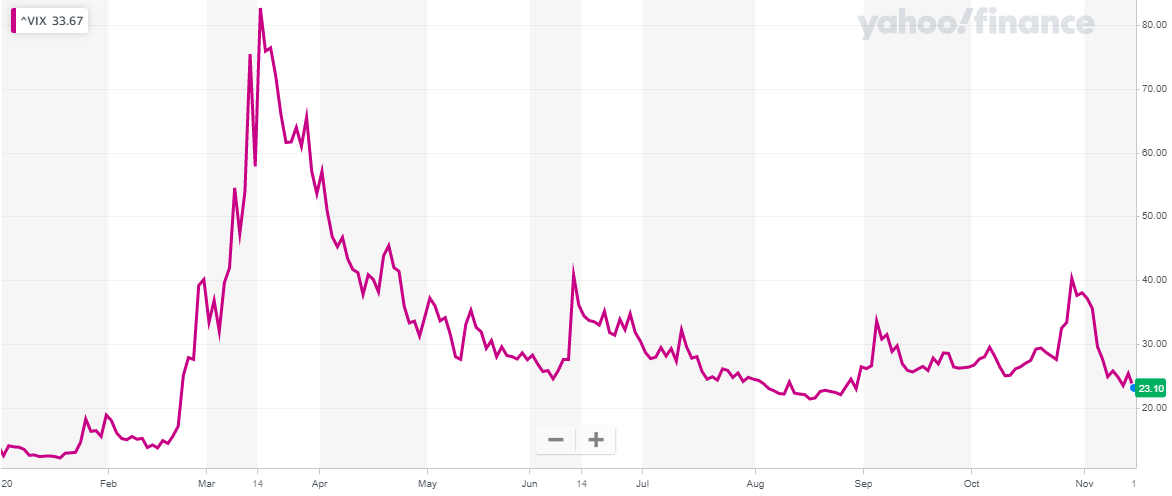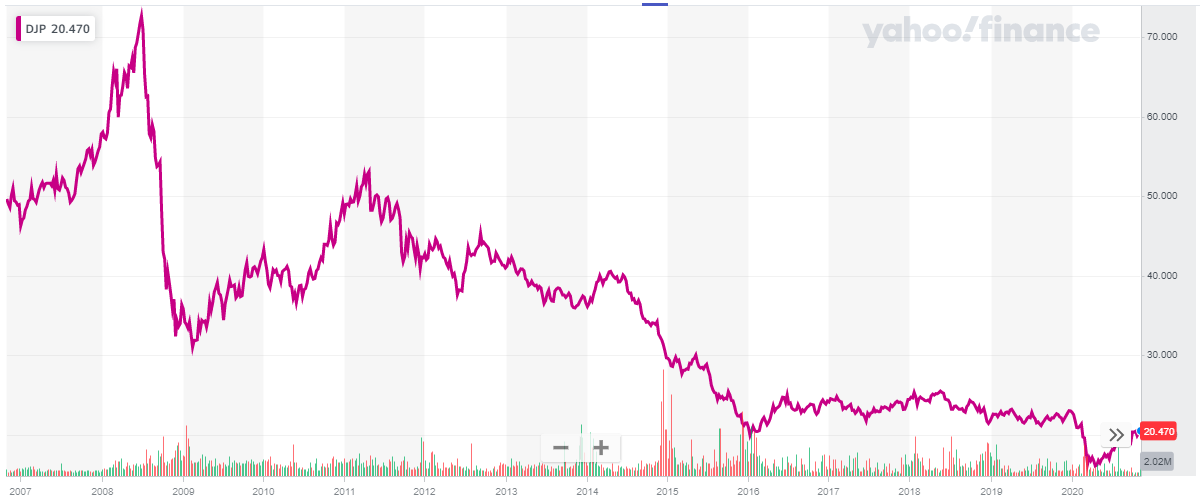This article is about volatility in the stock market. When market volatility is low, investors are calm and usually optimistic about the future. They contribute to their retirement funds. They buy stocks. They take on risk. And the market usually obliges by going up.
But when volatility begins to rise, or spike, it means that there's a disturbance in the force. Investors are uncertain, and fear of a downdraft is afoot. And the market often goes down.
I use three indicators to measure volatility: the VIX index, the Bollinger Bands, and the daily difference between the high and low prices of the market.
- The CBOE Volatility Index, or VIX, is a real-time market index representing the market's expectations for volatility over the coming 30 days.
- Investors use the VIX to measure the level of risk, fear, or stress in the market when making investment decisions.
- Traders can also trade the VIX using a variety of options and exchange-traded products.
What could go wrong?
Global investors are worried, and with good cause. Concerns about the impact of the surge in Covid cases are creating a volatile and highly uncertain backdrop for the global markets. But I have faith that in the end, cooler heads will prevail, and the markets will find support based on a continuation of the fragile economic recovery.
It's my belief that the global economy will get through 2021 without falling back into a double-dip recession. But near term, I see plenty of risk, both on a headline basis and on the releases of economic reports. This doesn't mean that a new bear market has started. But it does mean that the smart money (read: the big money investors) has turned more cautious, and I'm right there with them.
I anticipate that global economic activity will pick up in the 1st quarter of next year. I think the fundamentals of the stock markets around the globe are solid enough to deal with these challenges, and that they'll grind higher as the new year unfolds.
Even though the road ahead is full of risks, I remain committed to owning stocks. The sharp correction that we had in February-March helped to remove some of the speculative froth from the markets. My technical indicators are showing strength, as evidenced by the healthy trends in moving averages.
My fundamental indicators are also starting to show improvement, as evidenced by higher earnings revisions, better top line growth, and improving balance sheets. This environment is friendly for equity investors. The question is, how much longer can it last?
Where Are We In The Stock Market Cycle?
The stock market moves in cycles. The long term cycle is called the Secular Trend. I believe that we're currently near the end of a Secular Trend that began in March of 2009, with the end of the Great Recession. I told subscribers at that time that we were in for a long grinding move higher that could last 10 years or more. I now believe that this long, rising market is nearing an end.
It would not surprise us to see the stock market in the year 2021 end up at the same level it reached in March 2020. But how we get there is another story entirely. For that, we must turn to the shorter market cycles.
The Primary Trend Is Up
The long term trend (Secular Trend) is higher. But the medium term trend (Cyclical Trend) is sideways. The cyclical trend can last from 1 to 3 years, and it's very sensitive to the business cycle. When business are doing well, the stock market tends to do well.
The current cyclical trend began in March of 2009, when the economy and the bear market both bottomed out after the housing bubble burst. We're now at the end of the 11th year of this cycle, but I believe there is more room on the upside. It would not surprise me to see the market make a new all-time high above 3800 on the S&P 500 by March 2021. After that, I don't see much more upside.
The Short Term Trend Is Up
The shortest of the cycles I follow is the 1 to 3 month trend. I don't make any changes to my portfolio holdings based on this trend, but I do try to time any new purchases to take advantage of better prices. I expect the S&P 500 to make a push toward the 3800 level by year end. After that, I think a pullback to the 3000 level seems likely.
Unsustainable rally in the bond market
The bond market, especially the U.S. treasury bond market, rallied as a direct result of the global "flight to safety" trade. Nervous stock market money flooded into treasury bonds, causing prices to spike higher and yields to decline. I now believe that trade is over. As market participants become more confident about the resolution of the Eurozone sovereign debt crisis, they will gradually start to drain some of that money away from bonds and put it back into riskier assets. If you are currently over-invested in bonds, I think now is a good time to lighten up. If you are nervous about stocks, you can park your bond money in cash temporarily.
Commodities under pressure
Commodities have been in a stedy decline ever since the previous recession ended in 2009. But more recently, commodities have started to come alive. Except for oil and other fossil fuels, which have all dropped sharply in recent years. Partly due to a fear that China's growth would continue to slow down, and partly due to fears of a "double-dip" recession in 2021, almost all of the energy-related commodities I track were down 10%, 20% or even more in the last few months.
The weakness in commodities seemed more justified to me, given the announcements by the Chinese that they are trying to moderate growth, and given the potential for slower Eurozone growth as a result of austerity measures. I think the selloff in commodities is nearing an end, and I recently increased my allocation to them. Our premium members and our coaching clients were alerted to these changes in plenty of time to take advantage of the rebound.
Pay attention to the business cycle
As always, my stance on the markets, and my asset allocation models, are driven primarily by the business cycle. As long as the cycle remains on a recovery path, I see no reason to play heavy defense.
If the markets correct out of pure fear, I view it as an opportunity to buy underpriced assets. But if I see fresh evidence of a possible turn in the business cycle, that would be very different. If that were to happen, I would have to revisit all of my assumptions about growth and value, and I would be much more open to the idea of reducing exposure to the stock market.
"Those who wait for every problem to be solved before investing will be buying closer to the top than the bottom." - Jeff Miller, Seeking Alpha


